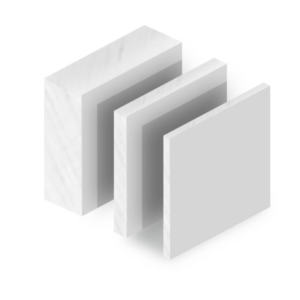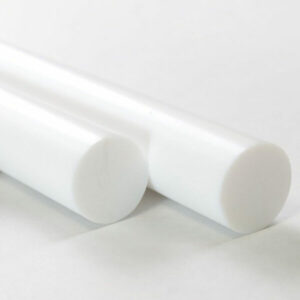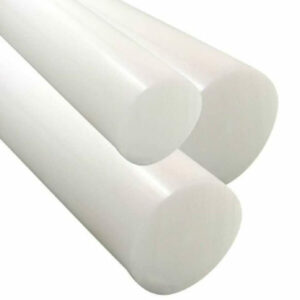Kunststof Forte BV
- Tube and rod
- Trespa /HPL Sheets
- Plexiglas
- Polycarbonate Sheets
- Dibond
- Forex
- Other plates
- Technical plastics
- Garden and Terrace
- Plastic Travelling Plates
Search products
Filter by price
Product categories
- All categories
- Corrugated sheets (1)
- Profiles and Accessories (3)
- Vegetable box (1)
- Square bar (1)
- Triangle bar (1)
- Acrylic Block GS (1)
- NidaPlast (1)
- Nidagravel Gravel Sheets (1)
- Technical Plastics (17)
- HMPE (4)
- POM Delrin plate (3)
- Fluorine-containing plastics (4)
- Construction Plastics (11)
- HDPE (5)
- Wear-resistant plastics (12)
- Recycled plastics (3)
- PFTE (3)
- Plastic Front Window (9)
- screed (1)
- Acrylic Accessories (9)
- Opaque colours (2)
- Opal (1)
- Mirror (1)
- Transparent (2)
- PVC (3)
- PP/Polypropylene (3)
- Polycarbonate Opal (2)
- PVDF (1)
- UHMPE (3)
- HPL Exterior panels (colour) (5)
- Trespa®HPL White (1)
- Trespa®HPL Made-to-measure (1)
- Trespa®HPL Screws (1)
- HPL Profiles (3)
- Plastic Terrace Planks (1)
- Protex® plastic facade cladding (12)
- Profiles (8)
- PLEXIGLAS®GS (15)
- Astaro glass ECO CAST Opal (1)
- Transparent Acrylic GS (2)
- PLEXIGLAS® XT (2)
- Astariglass ECO CAST colours (1)
- Plexiglas Satin (2)
- Aluminium profiles (8)
- Plastic Profiles (2)
- Foamboard (1)
- Protex® Sense Cladding (2)
- Protex Urban cladding (2)
- Outer corner profile (1)
- Buoy edge (1)
- Gable plates (9)
- Collection (1)
- Mud Slabs (1)
- Plexiglas (36)
- PVC foam board colour (1)
- Customised PVC foam board colour (1)
- PVC Foam Sheet White (1)
- PVC Foam Sheet White (Bespoke) (1)
- Palboard (1)
- Nylon PA6 (2)
- Other plates (3)
- PET Felt (2)
- Plastic Grids (2)
- Plexiglass White (1)
- Sign Again (1)
- Plexiglas GS White (2)
- Plexiglas GS Black (2)
- Plexiglas op maat (10)
- Acrylic tube (5)
- Aluminium composite plates (6)
- Plastic tube and rods (21)
- Polycarbonate tube (1)
- Plastic rod round (12)
- Drainage pipes (3)
- Technical Plastics (18)
- Plastic Sheets (48)
- HPL Accessories (8)
- Acrylate (2)
- Acrylic (Plexiglas) Sheet XT Clear (1)
- Trespa® HPL panels made to measure (15)
- Polycarbonate Channel plate (9)
- PVC foam board (6)
- Transparent (1)
- Wonderboard (5)
- Polycarbonate sheet (8)
- Smoke (4)
- Polycarbonate Sheets (23)
- Garden and Terrace (32)
- Buy Compost Bins (4)
- Sedum green roof system (1)
- Grasdallen (3)
- Gravel plates (3)
- Boarding (6)
- Marker caps (1)
- Maks Kiesfix Tile carriers (1)
- Root protection (1)
- Tube and rod
- Trespa /HPL Sheets
- Plexiglas
- Polycarbonate Sheets
- Dibond
- Forex
- Other plates
- Technical plastics
- Garden and Terrace
- Plastic Travelling Plates
Fluorine-containing plastics
What is telfon or PTFE and what is this plastic used for?
Teflon is the brand name used for polytetrafluoroethylene, which is a plastic also referred to with the abbreviation PTFE. In 1938, the American chemist Roy Plunkett accidentally discovered polytetrafluoroethylene in the Jackson Laboratory of the DuPont company. This laboratory is located in the American state of New Jersey. Roy Plunkett gave the name Teflon to the substance polytetrafluoroethylene and applied for a patent on this substance in the year 1938. The patent was granted on 4 February 1941 and Teflon was introduced as a commercial product in 1949.
Showing all 4 results
Filter 4 resultatenWhat exactly is Teflon?
Teflon is polytetrafluoroethylene, and this word makes it clear what kind of plastic it is. This is an ethylene polymer. In this ethylene polymer, all hydrogen atoms have been replaced by fluorine (halogen alkene). The ethylene polymer is very long and belongs to the largest molecules in the world. PTFE belongs to the thermoplastics, which means that this plastic becomes liquid when heated.
Nevertheless, PTFE cannot be processed in a thermoplastic way. PTFE is pressed into a mould in powder form at room temperature. Then the plastic is sintered in an oven. This sintering means that the powder is heated until it just barely changes into liquid form. The powder grains get more contact points during the sintering. This causes the grains to stick together well and a strong material is created.
Properties of Teflon or PTFE
The plastic PTFE has a number of special properties. First of all, this plastic has the lowest coefficient of friction. If PTFE is exposed to temperatures above 260 degrees Celsius, the quality of the material decreases. At temperatures above 350 degrees Celsius the material starts to decompose. The substances that are released are gaseous and are harmful to birds. In humans, the harmful fumes can cause flu-like symptoms such as fever, headache and chills. This is also known as Teflon fever or polymer smoke fever. This can happen, among other things, when people use so-called Tefal pans with a Teflon non-stick coating. Various reports can be found on the internet about the toxicity of Teflon or Tefal pans. Advocates and opponents of Teflon as a non-stick coating claim to have research results that prove or disprove the harmful effects of Teflon. Because there is no clarity about the harmful effects, it is better, as a precaution, to do some research before deciding to cook with pans that have a non-stick coating consisting of Teflon.
Applications of PTFE
The US Food and Drug Administration (FDA) investigated and approved PTFE in 1959. As a result, the material was applied in various types of food preparation equipment. Teflon is used, among other things, as a non-stick coating for pans. But it can also be processed in other materials used for food preparation.
Teflon is also used as insulation material in electrical installations. This is because PTFE has a high specific resistance (1020 Ohm metres). In addition, this plastic is also resistant to high temperatures and has a low friction resistance. Because of these properties, it is suitable as an insulator for cabling in specialist installations where high demands are made of the material, such as in aircraft or military installations.
In high voltage installations, Teflon can be used as an insulator. In the space industry, PTFE is used as a heat-resistant material in a heat shield. It is also used in the coating of space suits.
Teflon tape is a well-known material used for sealing threads in gas pipes. The Teflon tape is first wrapped around the thread (counter-threaded) and then the coupling is attached. The Teflon tape then provides optimum sealing.
The low coefficient of friction also makes PTFE suitable as a material for computer mice. In liquid form, such as drops or spray, Teflon is used as a lubricant. Here too, the low friction coefficient is an important advantage.


